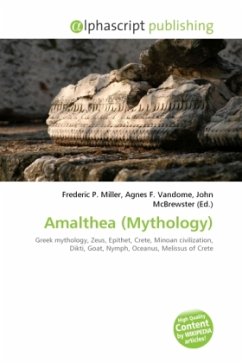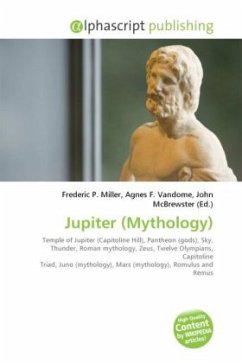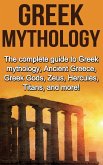In Greek mythology, Amalthea or Amaltheia is the most often mentioned among foster-mothers of Zeus. Her name in Greek is clearly an epithet, signifying the presence of an earlier nurturing goddess, whom the Hellenes, whose myths we know, knew to be located in Crete, where Minoans may have called her a version of "Dikte". Amalthea is sometimes represented as the goat who suckled the infant-god in a cave in Cretan Mount Aigaion, sometimes as a goat-tending nymph of uncertain parentage, who brought him up on the milk of her goat. Having multiple and uncertain mythological parents, indicates wide worship of a deity in many cultures having varying local traditions. Amalthea becomes blurred with Adamanthea at times. In the tradition represented by Hesiod's Theogony, Cronus swallowed all of his children immediately after birth. The mother goddess Rhea, Zeus' mother, deceived her brother consort Cronus by giving him a stone wrapped to look like a baby instead of Zeus. Since she instead gave the infant Zeus to Adamanthea to nurse in a cave on a mountain in Crete, it is clear that Adamanthea is a doublet of Amalthea.
Bitte wählen Sie Ihr Anliegen aus.
Rechnungen
Retourenschein anfordern
Bestellstatus
Storno








